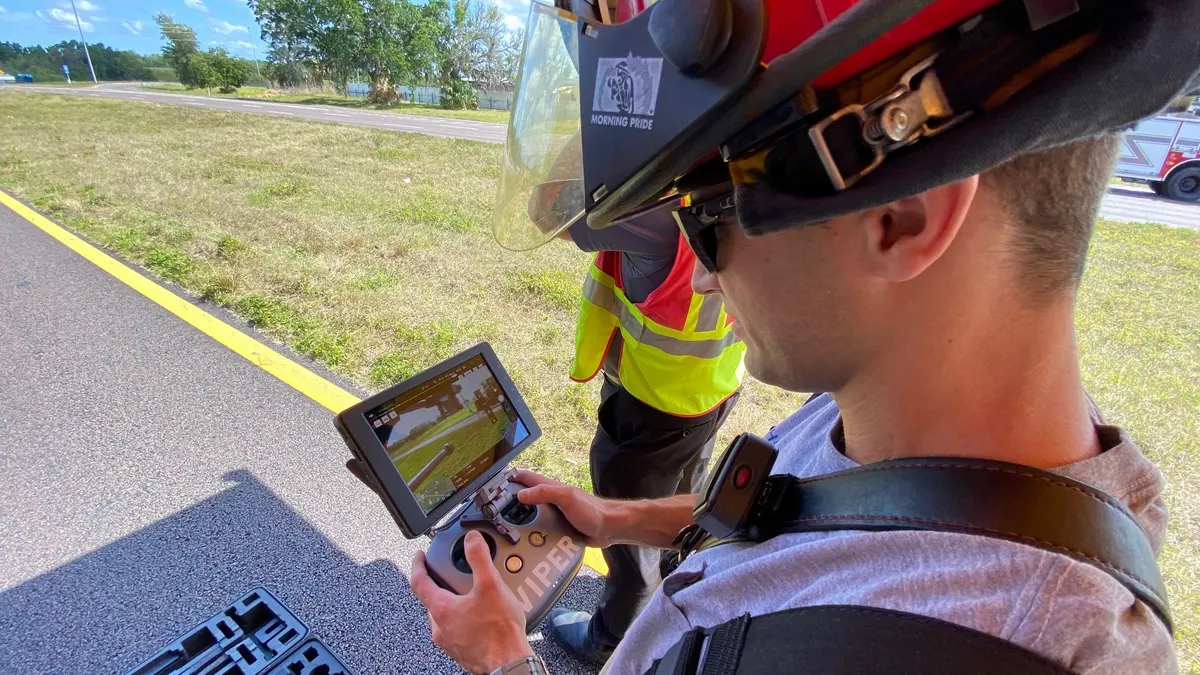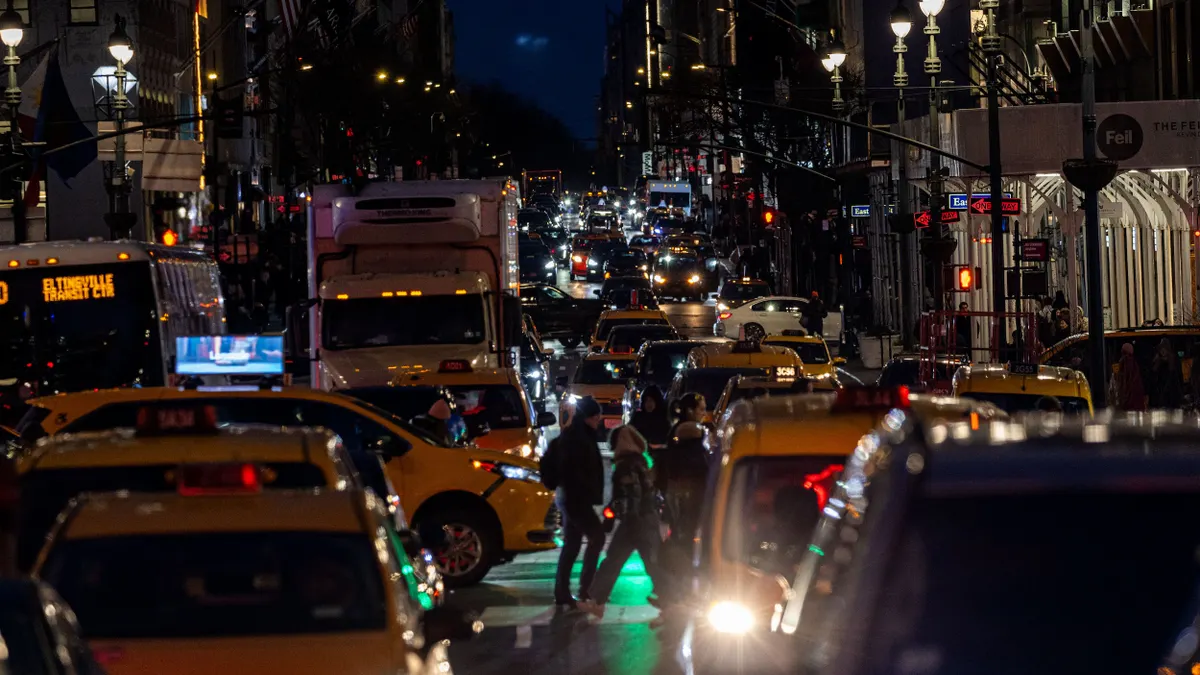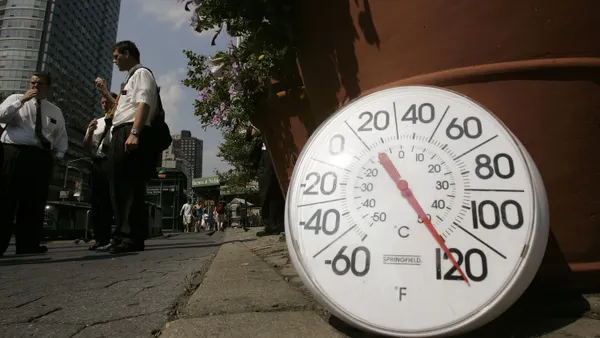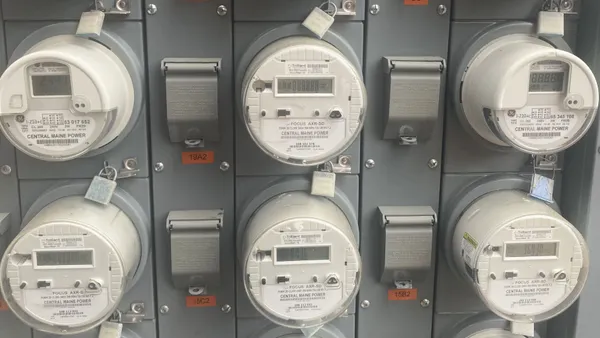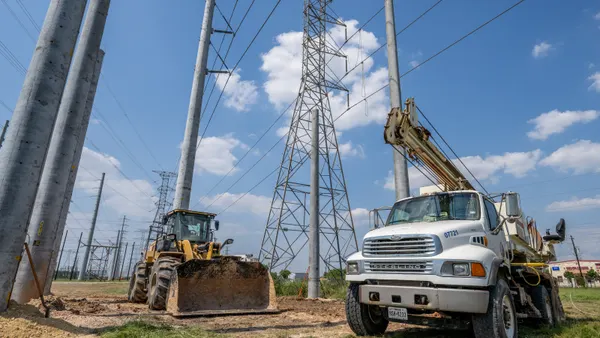Dive Brief:
- The first electric vehicle (EV) chargers in a new $7.5 billion national network could be installed later this year, U.S. Department of Energy officials said Thursday during an online summit hosted by the National EV Charging Initiative.
- DOE and the U.S. Department of Transportation (DOT) have formed a joint office to support the development of the 500,000 station network. Each agency is hiring about 1,000 new workers for the rollout and other Biden administration clean energy policies.
- Guidance on how states can access funding for the EV charging network is expected to be issued in mid-February, according to Michael Berube, deputy assistant secretary for sustainable transportation in DOE's Office of Energy Efficiency and Renewable Energy.
Dive Insight:
States will develop implementation plans while DOE's new joint Office of Energy and Transportation provides "the data, information and the know-how, on that process," said Berube.
President Biden's goal for half of all new U.S. passenger vehicle sales to be electric by 2030 is achievable, experts say, but will require extensive partnerships along the EV value chain. Next month's guidance "will really be the beginning of a very deep collaboration," Berube said. "We certainly hope to start seeing the initial chargers this year."
To get there, DOE and DOT are staffing up.
DOE announced its Clean Energy Corps this month, to help manage a $62 billion investment included in the bipartisan infrastructure legislation passed in November. The agency is hiring more than 1,000 new employees and DOT has similar goals.
"This is an incredible opportunity for folks to come to the federal government at one of the most exciting moments," DOT Deputy Secretary Polly Trottenberg said. "If you care about climate, if you care about equity, here's your chance to get in and help us deliver."
The joint office will help states sort through questions like how funding streams work and locate areas where public investment makes the most sense. The office will connect with state transportation departments and utility commissions, along with other groups that states will bring to the table.
The collaboration will ensure the charging network reaches into rural and urban areas and includes traditionally underserved areas, said Berube. The investments will align with Biden's Justice40 initiative, which directs 40% of the benefit of federal investments towards environmental justice communities.
"One of the key things we would recommend from our work in this space over the years ... is making sure we're taking the time to listen to communities, to spend the time with people in those communities," he said. "We don't have a magic bullet, by any means. But communication and talking and working with the communities directly is going to be key."
The upcoming guidance will stress interoperability, while also making space for the next generation of charging technologies.
"We're going to deploy what we think is a forward-looking set of guidance, and ultimately requirements," Berube said. "This is a network that is going to grow ... A core principle we have is to make this experience as comfortable and convenient for consumers as it is today to fuel their vehicle. You want to make it as easy, and as universally accessible. This isn't just for a small group or niche."
As states develop plans to access federal funding, Berube said local officials must engage with the utility sector from the beginning.
"If you hand [utilities] a plan once it's written, that will be probably a more expensive plan to implement than if you work upfront, collaboratively," he said.
The utility sector is ready to make that investment, Edison Electric Institute (EEI) President Tom Kuhn said. The group represents investor-owned utilities and its members have already been approved to spend more than $3.4 billion on customer programs to deploy charging equipment and other activities to accelerate electric transportation.
There is also more than $1 billion in additional investments still pending regulatory approval, Kuhn said.
There are more than 2 million EVs on U.S. roads today, and EEI expects that number will reach 22 million within a decade. Public fast chargers will need to grow 10-fold to meet that demand, he said. EEI in December announced it would lead a coalition of more than 50 utilities working to install fast-charging infrastructure along major U.S. highway corridors by the end of 2023.
"Today, the biggest barrier is not a lack of EVs but access to charging infrastructure that is convenient, affordable, equitable and reliable," Kuhn said.





